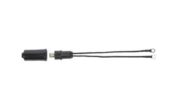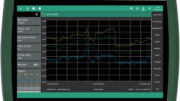How do you talk about TV antennas, which are based on laws of physics that haven’t changed at all in 2016? That’s the question. This year, over-the-air antennas were big, and surprisingly there actually were some advances that made it worth giving antennas a second look.
The real big news for us was that we took on the Televes and Antop antenna lines. Both feature scorchingly powerful amplifiers and LTE filters (more on that in a bit) but that’s where the similarity ends. Televes antennas are built for decades of use, based on European designs that are time tested. If you wish you could buy an antenna as good as the one your dad put on the roof, you owe it to yourself to check out Televes.
On the other hand, Antop features an antenna for virtually any need, and at a reasonable price. They have the most powerful omnidirectional antenna you can buy today and a variety of shapes and sizes sure to please even the most annoying condo board or HOA.
LTE Filtering
The big advancement this year was LTE filtering. LTE is another word for the cell phone data signal you rely on, and it’s become a big thing. Unfortunately, LTE frequencies at 698MHz are very close to UHF frequencies — in fact 698MHz used to be used for UHF so older antennas are actually designed to pick it up. The problem is that this strong local signal can interfere with your ability to pick up more distant signals.
Our new antenna lines feature LTE filtering which means that those upper frequencies are just 100% blocked. They’re not a problem. They’re out of the equation. Honestly this is something everyone should add to their antenna setups, and if you want to keep your older antenna, we offer a standalone filter that connects inline and makes it easy to solve this problem once and for all.
Every year, we ask ourselves, could antenna technology get any better? After all as I said, it’s all about physics. So maybe next year we won’t see any big jumps in tech. Most likely what we will see is the final results of the FCC’s big plan to buy back broadcast frequencies. So far it hasn’t been the smooth process they’d hoped, and a lot of broadcasters aren’t selling back their licenses. The FCC could get more aggressive, depending on who the next chairperson is. We’ll know soon enough.





